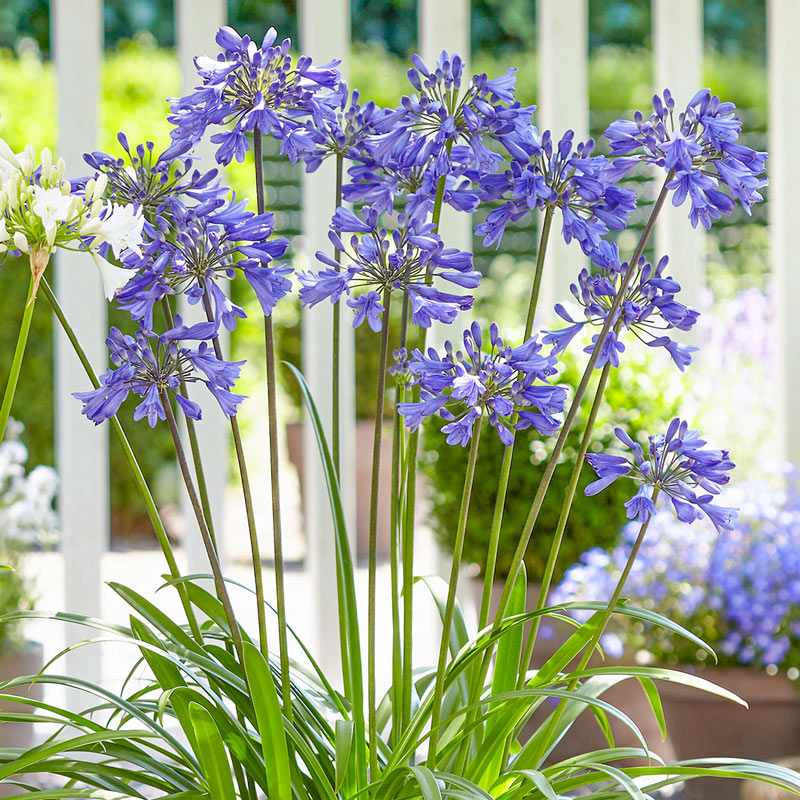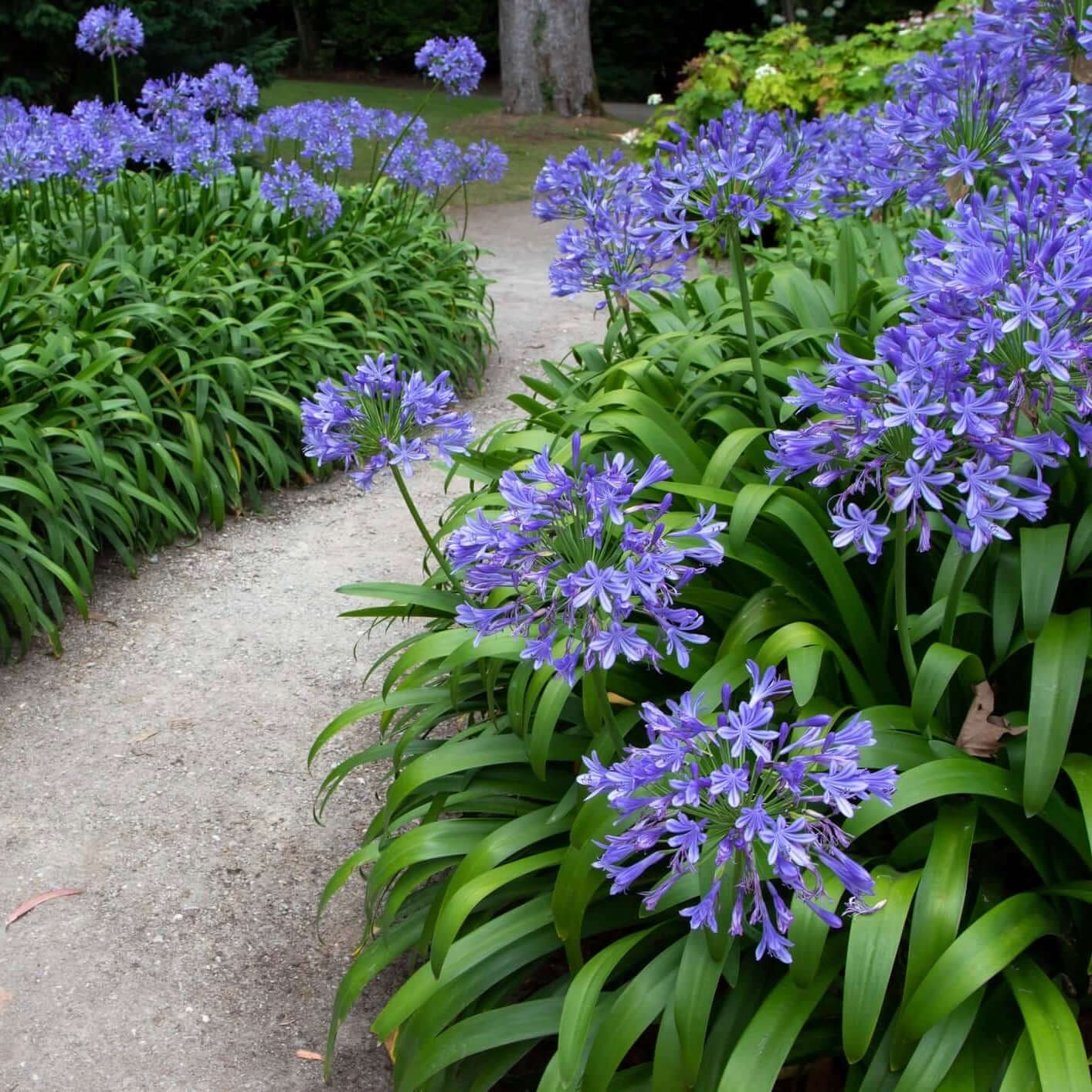Agapanthus Propagation: Tips for Expanding Your Plant Collection
Agapanthus Propagation: Tips for Expanding Your Plant Collection
Blog Article
Understanding the Art of Agapanthus Care: Necessary Steps for Healthy Development and Dynamic Blooms
In the world of cultivation, the growing of agapanthus stands as a rewarding venture for those who seek to support these stylish blooming plants. From selecting the appropriate variety to understanding pruning methods, the trip towards growing thriving agapanthus plants is diverse and holds the key to unlocking the complete potential of these herb treasures.

Picking the Right Agapanthus Selection

When choosing the ideal Agapanthus selection for your yard, take into consideration variables such as environment viability, blossom color, and development behavior. Agapanthus, typically understood as Lily of the Nile or African lily, can be found in a range of shades varying from shades of blue and purple to white. Choose a flower shade that enhances your existing yard scheme to produce an unified landscape. In addition, think about the environment in your region to make sure the Agapanthus variety you select can thrive in your particular conditions. Some ranges are extra forgiving of chilly temperature levels, while others like warmer climates. Recognizing the growth behavior of various Agapanthus ranges is crucial for appropriate placement within your yard. Some selections have a clumping growth practice, ideal for boundaries or containers, while others have a more dispersing nature, appropriate for ground cover or mass plantings. By carefully reviewing these variables, you can choose the perfect Agapanthus selection to boost the charm of your garden.
Suitable Growing Conditions
Taking into consideration the optimal ecological demands is essential for successful Agapanthus farming. Agapanthus flourishes in well-draining dirt with a slightly acidic to neutral pH degree. When planting, pick an area that receives full sunshine to partial shade. In hotter environments, giving some mid-day color can prevent scorching of the fallen leaves. Agapanthus plants are delicate to cool temperatures and should be safeguarded from frost throughout winter season.
To guarantee healthy growth and vivid flowers, plant Agapanthus bulbs at a deepness of regarding 2-4 inches and space them 8-12 inches apart. Adding natural issue, such as garden compost, to the soil can boost drain and fertility, promoting durable origin growth. Mulching around the base of the plants helps keep dampness and subdues weed growth. Regular watering is vital, particularly during the growing season, to keep the soil constantly moist but not saturated.
Watering and Feeding Tips
Keeping proper dampness levels and giving essential nutrients are crucial aspects in the treatment regimen for Agapanthus plants. When it comes to sprinkling Agapanthus, it is crucial to strike a balance. These plants favor consistently wet dirt however are vulnerable to root rot if overwatered.
Feeding Agapanthus is necessary for advertising healthy and balanced growth and prolific blooms. Use a well balanced plant food, such as a 10-10-10 formula, in the very early springtime as new growth arises. By following these watering and feeding ideas, you can ensure your Agapanthus plants prosper and produce vivid, resilient blooms.
Trimming Techniques for Agapanthus
Trimming Agapanthus plants at you could check here the suitable times and with proper methods is important for maintaining their wellness and advertising optimal growth and flowering. The excellent time to prune Agapanthus is in late winter season or very early spring prior to new growth emerges. Begin by removing any yellowing or dead leaves near the base of the plant. Cut them as close to the ground as possible without harming the emerging shoots.
Deadheading spent flowers can also reroute the plant's power into creating even more flowers instead than establishing seeds. If you desire to accumulate seeds for proliferation, leave some flowers to mature and completely dry on the plant.
Bear in mind to use tidy, sharp devices to make accurate cuts and decrease the risk of introducing diseases. Agapanthus. Normal trimming will certainly aid maintain your Agapanthus looking healthy and balanced and cool while guaranteeing an abundant screen of gorgeous blooms
Managing Typical Parasites and Conditions
After making certain appropriate trimming methods for Agapanthus, it is important to attend to common parasites and conditions that can influence the health and vitality of these plants. One usual parasite that impacts Agapanthus is the Agapanthus gall midge.
In addition, Agapanthus plants can suffer from root rot if they are planted in improperly draining pipes dirt. By being watchful and taking timely action versus illness and bugs, you can aid your Agapanthus plants grow and produce vivid blooms. Agapanthus.

Final Thought
In verdict, grasping the art of agapanthus care includes picking the appropriate selection, giving excellent growing conditions, appropriate watering and fertilizing, appropriate pruning techniques, and addressing usual pests and find more information conditions. By adhering to these necessary actions, you can make sure healthy growth and vivid flowers for your agapanthus plants. Remember to on a regular basis monitor and maintain your plants to promote their general well-being and durability.
To ensure healthy development and vivid blooms, plant Agapanthus light bulbs at a depth of concerning 2-4 inches and area them 8-12 inches apart. By following these watering and feeding ideas, you can guarantee your Agapanthus plants flourish and produce lively, resilient pop over to this site blossoms.
One typical insect that impacts Agapanthus is the Agapanthus gall midget. In addition, Agapanthus plants can suffer from root rot if they are planted in poorly draining soil. By following these important actions, you can guarantee healthy and balanced growth and vivid blossoms for your agapanthus plants.
Report this page